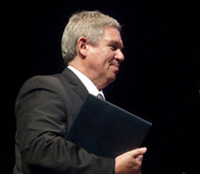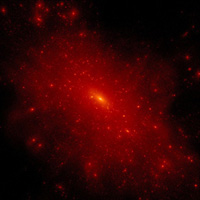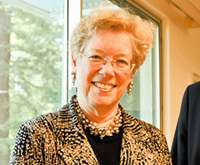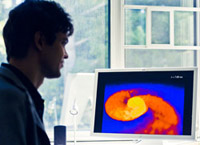UC Santa Cruz is one of the world's leading centers for observational and theoretical research in astronomy, astrophysics, and planetary science. Areas of special interest at UCSC include the formation and evolution of stars and galaxies, planet formation and extrasolar planets, cosmology, high-energy astrophysics, black holes, supernovae, and optical and infrared astronomy.
Faculty in four departments are engaged in this research: Astronomy and Astrophysics, Earth and Planetary Sciences, Physics, and Applied Math and Statistics. UCSC has been ranked first in the nation for research impact in both astronomy (2008) and physics (2007), based on how often our faculty's published research in these fields is cited by other scientists.
UCSC's award-winning astronomers and astrophysicists include Sandra Faber, renowned for her work on galaxy formation and evolution; Jerry Nelson, a pioneer in telescope design; astrophysicists Stan Woosley and Enrico Ramirez-Ruiz; adaptive optics pioneer Claire Max; physicist Bill Atwood; planetary scientists Francis Nimmo and Jonathan Fortney; and planet hunter Steve Vogt, among many others.
Headquartered on the UCSC campus is the University of California Observatories (UCO), which operates the Lick Observatory on Mt. Hamilton near San Jose and oversees UC's participation in the W. M. Keck Observatory in Hawaii.
UCSC astronomers have been integrally involved in the design, construction, and use of the Keck Observatory since the project's inception. Lick Observatory, established in 1888, was the first major mountaintop observatory and continues to be an important research site. UCO is also the center for UC participation in the Thirty-Meter Telescope (TMT) project.
UCSC astronomers and physicists have been involved in the design and construction of many other major telescopes and astronomical instruments. Physicists at the Santa Cruz Institute for Particle Physics (SCIPP) played a leading role in the development of the main instrument on NASA's Fermi Gamma-ray Space Telescope. Most of the instruments for the Lick and Keck Observatories are designed and fabricated at UCO's technical facilities at UCSC and UCLA.
The UCSC facilities include an optical lab and shops, an engineering lab, an advanced detector lab, and the Laboratory for Adaptive Optics, established with a grant from the Gordon and Betty Moore Foundation. UCSC astronomers have been pioneers in the development of adaptive optics technology, which removes the blurring of telescope images caused by turbulence in the atmosphere.
Also based at UCSC is the UC High-Performance AstroComputing Center, directed by physicist Joel Primack and focusing on the use of supercomputers to explore fundamental questions in astrophysics.
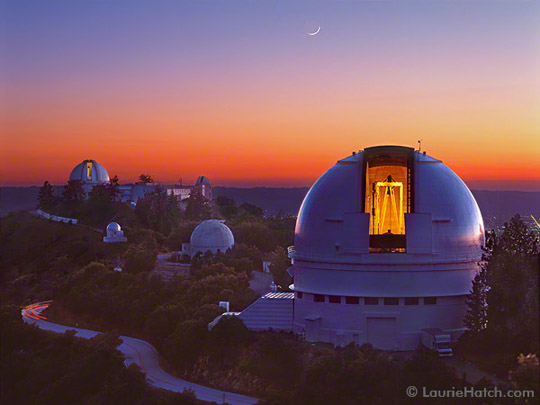
Lick Observatory (photo by Laurie Hatch) |
